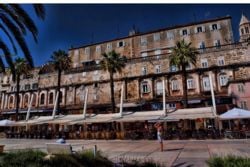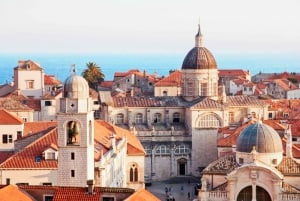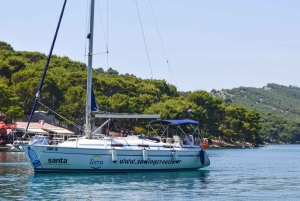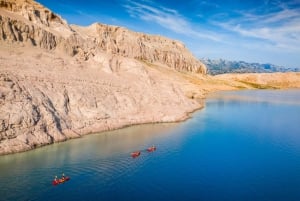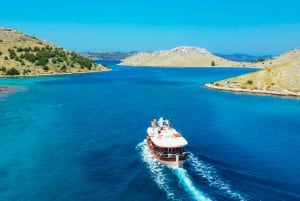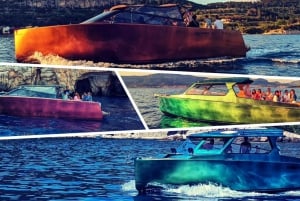Split Region
Aged stone houses with red roofs and green wooden shutters, slightly faded by the salt water surrounded by wild oleander trees and luscious lavender, guarded by hundred year old palm trees is a typical scene in the city of Split. As you take a stroll along the newly updated boardwalk of the old city, you will not know which view to take in first. The whole boardwalk is lined with hundreds of magnificent palm trees which all face the harbour to the east with a glimpse of the historical town of Trogir to the west. On a hot, summer’s day your senses will be happily awakened with the scent of fresh fish searing on the grill at any local restaurant. You will be mesmerized by the views of the crystal clear blue- green Adriatic Sea lined with luxurious yachts and sailboats in the distance beckoning you to enter. It is no wonder the Emperor of Rome decided to make Split his home by building the Dioceltian Palace around it. The Diocletian Palace is one of the many UNESCO cultural heritage attractions in Split.
The St.Duje Cathedral and bell tower and the Grgur Ninski monument, are among some of the other cultural sites that make Split so architecturally pleasing to the eye. Do not forget to make a wish and rub the big toe of the statue of the Medieval Croatian Bishop, Grgur Ninski. If it is nature at its best that you are looking for, simply take a hike up the hill of Marijan. The spectacular images from the lookout points will leave you speechless. If it is summer fun that you are seeking, the main city beach, Bacvice Beach, is located just off the city boardwalk. Its shallow waters, warmed by the scorching Dalmatian sun will find locals playing a game of picigin (water handball) well into the fall months. The sandy beach, in the heart of the city, is a popular destination for tourists and locals alike. At night, this beach turns into a haven for the partying enthusiasts seeking great nightlife, which lasts into the early hours of the morning.
One cannot describe the city of Split without mentioning the succulent specialties of Dalmatia that are offered in one of the many restaurants in and around the city. Marenda, which is served anywhere between eleven and three in the afternoon, is the best time to try a typical Dalmatian dish at a relatively low price. If pasticada, beef in a rich sweet wine sauce, brujet, fish stew in a distinctive savory broth or girice and srdele, salty deep fried pickarle and anchovies, are on the menu, you will not be disappointed. Dinner is a meal, which is typically enjoyed later in the evening, around 9:00 p.m., and can last for hours. From appetizers of fresh tuna carpaccio on a bed of homegrown riccola or exquisite, creamy, scampi soup, this is a course your taste buds will not want to miss out on. Main meals include juicy steaks, sizzling from the grill, whole fresh fish drizzled with Dalmatian olive oil, or pastas with local octopus and shellfish in a homemade tomato sauce, sprinkled with fresh cut basil. The appetizing and delectable specialties of this region are an attraction of their own.
The Mediterranean diet derived from fresh, homegrown ingredients, seasonal fruits and vegetables and local fish and meat is said to be one of the healthiest in the world. As a result of the moderate climate, great food, and outdoor lifestyle, Split is home to some of the greatest sports athletes of our time, such as Goran Ivanisevic, wildcard winner of Wimbledon in 2001 and record-breaking high jumper Blanka Vlasic. It is on the field of Split’s Poljud Stadium that soccer players such as Alen Boksic and Slaven Bilic began their careers. They, along with the rest of their team members went on to make Split and Croatia proud by being third place winners in their first ever FIFA World Cup in 1998.
Split is not a city to see; it is a city to experience. The casual, laid- back atmosphere, the romantic, intertwining cobblestone paths, and the warm Adriatic air will leave a lasting impression for every visitor.



